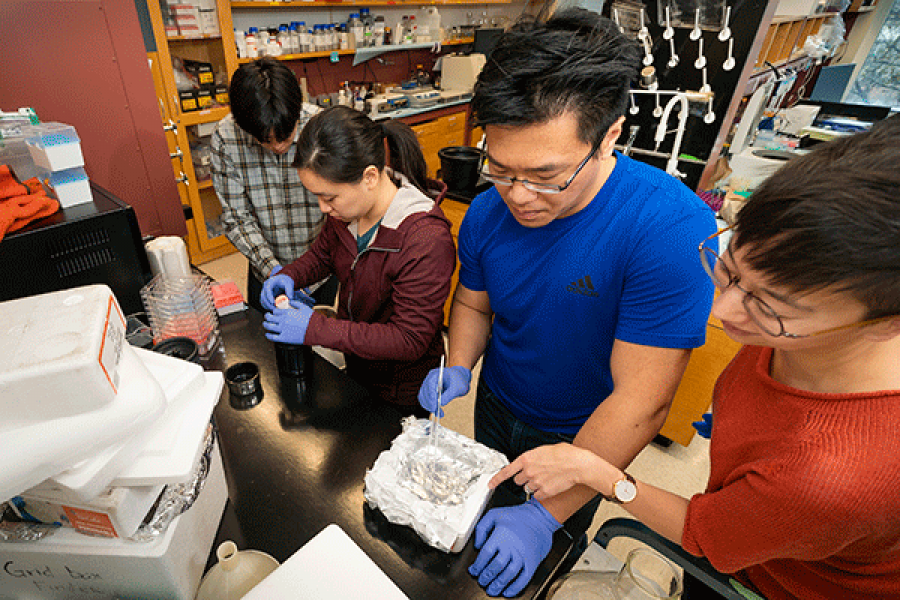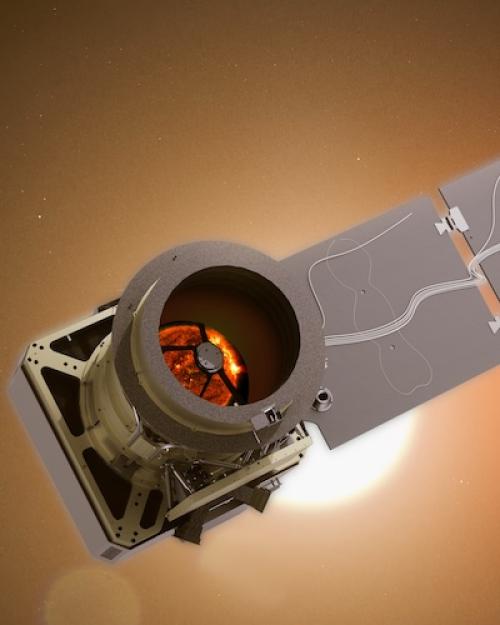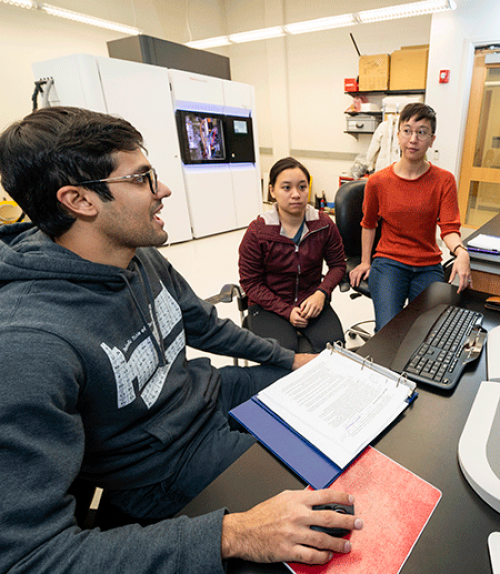Elizabeth H. Kellogg, assistant professor of molecular biology and genetics in the College of Arts and Sciences, considers herself an explorer.
She devises and refines techniques for looking at the unmapped terrain within cells so she can discover molecular structures so small they are challenging to detect – yet essential to understanding cell function.
Using cryo-electron microscopy (cryo-EM), Kellogg has made recent discoveries that add to our knowledge of Alzheimer’s disease and the fundamental mechanisms of DNA recombination. “Every time you get to see a new structure,” she said, “you get a small window into a new world.”
Taking Cryo-EM to the next level
Developments in cryo-EM earned three scientists the 2017 Nobel Prize in chemistry. Further developments released while Kellogg was a postdoctoral fellow at the University of California Berkeley, including a new camera and image-processing software, have led to an unprecedented explosion of structural information, “discoveries revealing the solutions to problems that had remained unsolved for decades,” she said.
She remembers seeing, for the first time, the high-resolution features of her first cryo-EM structure—the structure of Taxol, an important anti-cancer drug, interacting with the microtubule-binding pocket, a structure necessary for cell division. It was 2013, and she was a postdoctoral fellow at the University of California Berkley.
“We wanted to see how the cellular structure interacted with the drug,” she said. “Taxol stops cells from dividing, which is how it kills cancer cells. The question was how does it do that?”
Using cryo-EM and a new camera, Kellogg and her collaborators were able to see exactly how Taxol disables microtubules.
“The level of detail and the structural information we could obtain using these new cameras astounded me” Kellogg said. “There are so many unsolved biological questions that are now possible to answer with a cryo-EM structure.”
The protein structures Kellogg studies are much smaller than the wavelength of light, making visualization a major challenge. Cryo-EM freezes samples very quickly, capturing particles in action. This allows her to study the natural movement of proteins by preserving a full range of their motions.
This gold grid holds the protein samples Kellogg examines using cryo-electron microscopy. The technique freezes samples very quickly, capturing particles in action.
“Proteins need to move in order to function, like all living things,” Kellogg said. “When you freeze a sample, you’re preserving it the way it is in solution, so a thermodynamic ensemble of states is, in principle, accessible to you. Cryo-EM preserves the functional motions present within your sample. That makes cryo-EM one of the most promising techniques to study protein dynamics.”
The vision she has for her lab is to develop techniques using cryo-EM to isolate and view proteins virtually unchanged from the way they function within the cell.
A landmark discovery
Using cryo-EM, Kellogg is revealing the structures of specific proteins. In October, she published a study in Nature, collaborating with biochemist Donald Rio from the University of California, Berkeley, that reports the structure of the P element transposase, which contributes to understanding the fundamental molecular mechanisms that recombine, or “shuffle,” DNA.
Transposases are proteins that “cut and paste” genetic material from one location in the genome to another, contributing to genetic diversity. P element transposase is present in the genome of Drosophila – the fruit fly.
“We want to understand the fundamentals underlying DNA recombination,” Kellogg said. “This study reveals new and unexpected insight into the process of transposition and the diversity of evolved strategies to carry out DNA recombination.”
Implications for Alzheimer’s disease
In earlier research, Kellogg used cryo-EM to add to our understanding of Alzheimer’s disease. In a 2018 study published in Science, Kellogg visualized the healthy operation of tau, which she calls “a flexible, dynamic protein” that is important for neurological development.
Liz Kellogg, right, and student members of her lab prepare protein samples cooled by liquid nitrogen so they can be viewed using cryo-electron microscopy.
In a healthy state, tau associates with structures called microtubules in brain cells. But when tau proteins fail to bind with these structures, they create tangles of protein inside brain cells, contributing to the progression of Alzheimer’s disease and other forms of dementia.
Kellogg’s work with tau combined cryo-EM with advanced computational protein modelling, a new technique she is developing. This approach allows the lab to solve the structure of very dynamic proteins, or even intrinsically disordered proteins, Kellogg said.
“We are at the beginning of an avalanche of new insights on how biology works at the molecular level,” Kellogg said. “At the same time, we are beginning to expand on what cryo-EM can really achieve. I’m excited for what we will be able to do with this in the future and the new structural insights that will be revealed by this powerful technique.”
Read the article in the Cornell Chronicle.






